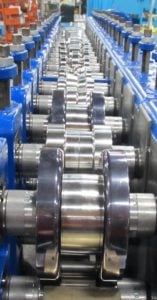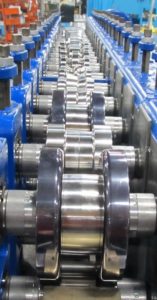 The impact of new technology on tube mills and roll forming in the sheet metal world is vividly illustrated by the practice of laser mill alignment. Efficiency and quality multiply by leaps and bounds. But what does it take for a mill to acquire this level of performance? That’s a good question, because carrying out laser alignment procedures can be complicated, to say the least.
The impact of new technology on tube mills and roll forming in the sheet metal world is vividly illustrated by the practice of laser mill alignment. Efficiency and quality multiply by leaps and bounds. But what does it take for a mill to acquire this level of performance? That’s a good question, because carrying out laser alignment procedures can be complicated, to say the least.
Anticipating this contingency, Formtek assembled a highly-trained laser alignment team of technicians that now has expert experience with all sizes and shapes of metal forming arenas. Here are the primary procedures that the Formtek team undertakes to accomplish accurate laser mill alignment:
- The forming base must be level
- All shafts must be set in parallel
- Both the first and last pass must have a 0.000” shoulder setting
- The first and last pass shoulders are set manually, setting your “zero reference point”
- Affix the laser target to the bottom shaft of the first pass
- Turn on the laser, adjusting its height until the vertical and horizontal readings are 0.000”
- Check the laser for “true centerline” calibration. This is done by placing the target on the bottom shaft of the first pass.
- Starting with the second pass, go down the mill to check each bottom pass shoulder, recording all of the settings
- Repeat the process for top shafts.
- With all current settings recorded, the shoulders can be reset by moving shims to the front retainer from the back and vice-versa, or grind hardened spacers to size
- Re-check and make a record of all the final settings
The result? The laser is capable of aligning the mill to plus or minus 0.002”. No mean achievement compared with old-fashioned levels, squares, theodolites, and even optical systems! And just as important, a bare minimum of downtime in the machine shop.



